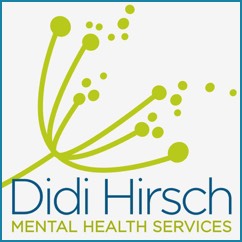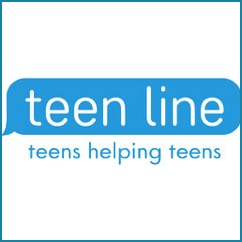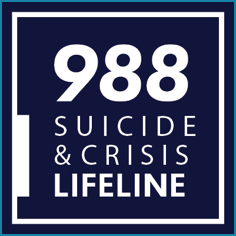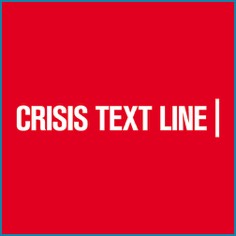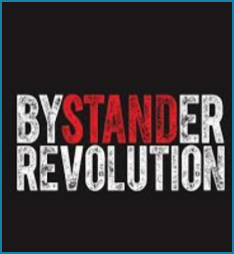IF YOU ARE IN CRISIS OR KNOW ANYONE IN CRISIS
PLEASE TALK WITH SOMEONE IMMEDIATELY
YOU ARE NOT ALONE
24/7 HOTLINES
National Suicide Prevention Lifeline
DIAL 988
Crisis Text Line
Eng: Text HOME to 741741
Spa: Text HOLA to 741741
The Trevor Project (for LGBTQ Youth)
Call 1 (866) 488-7386
Text START to 678678

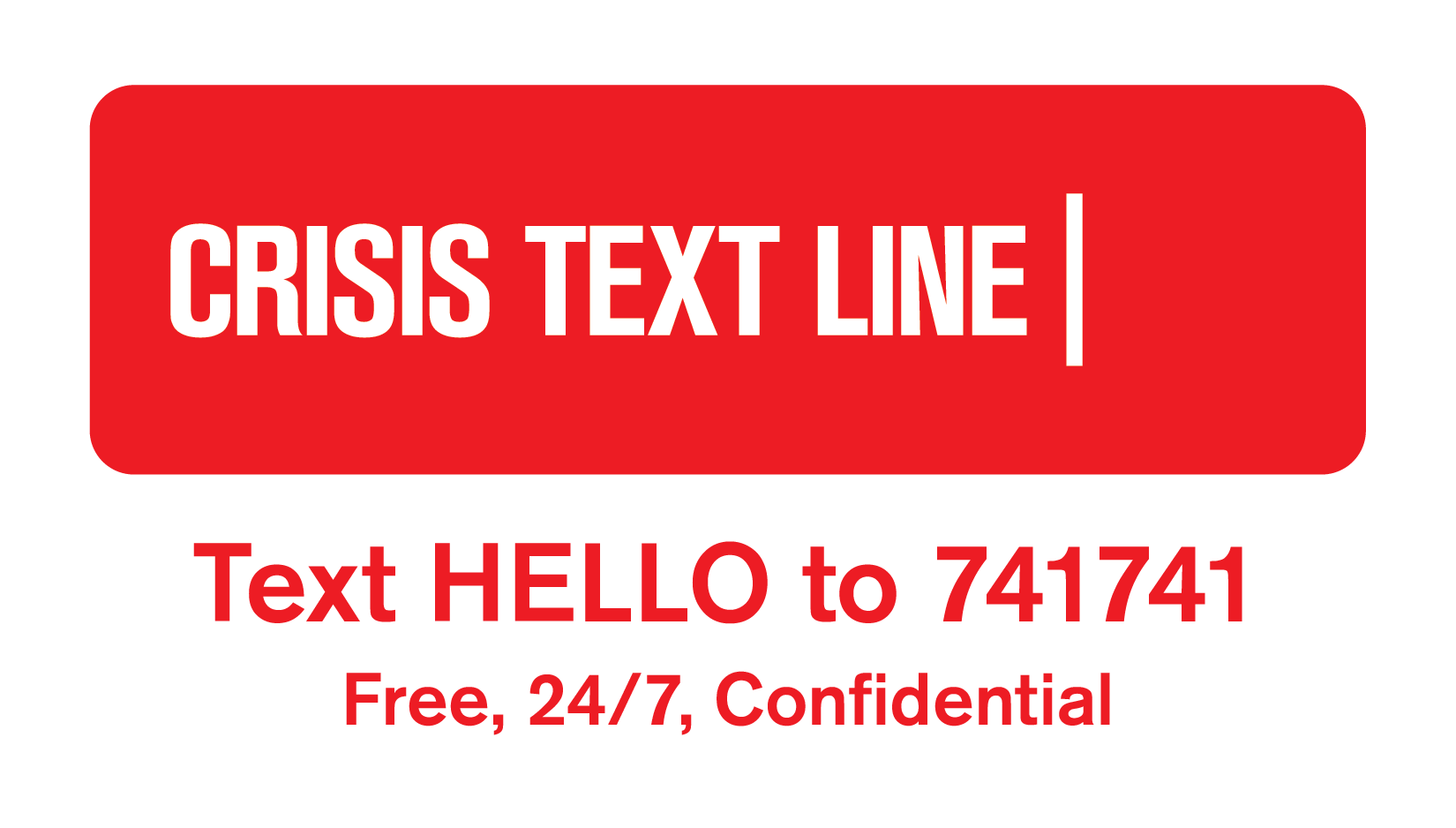
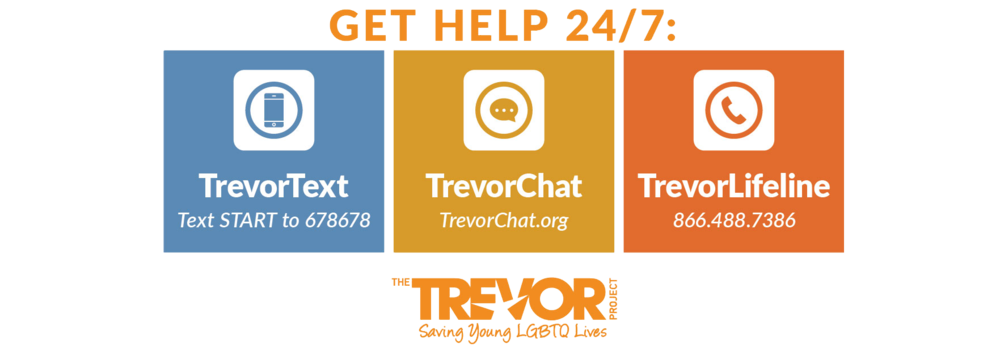
Call the National Suicide Prevention Lifeline (Lifeline) at 988, or text the Crisis Text Line (text HELLO to 741741). Both services are free and available 24 hours a day, seven days a week. All calls are confidential. Contact social media outlets directly if you are concerned about a friend’s social media updates or dial 911 in an emergency. Learn more on the Lifeline’s website or the Crisis Text Line’s website.
Suicide is a major public health concern. In 2019, suicide was the 10th leading cause of death overall in the United States, claiming the lives of over 47,500 people. Suicide is complicated and tragic, but it is often preventable. Knowing the warning signs for suicide and how to get help can help save lives.
Warning Signs
Warning signs that someone may be at immediate risk for attempting suicide include:
- Talking about wanting to die or wanting to kill themselves
- Talking about feeling empty or hopeless or having no reason to live
- Talking about feeling trapped or feeling that there are no solutions
- Feeling unbearable emotional or physical pain
- Talking about being a burden to others
- Withdrawing from family and friends
- Giving away important possessions
- Saying goodbye to friends and family
- Putting affairs in order, such as making a will
- Taking great risks that could lead to death, such as driving extremely fast
- Talking or thinking about death often
Other serious warning signs that someone may be at risk for attempting suicide include:
- Displaying extreme mood swings, suddenly changing from very sad to very calm or happy
- Making a plan or looking for ways to kill themselves, such as searching for lethal methods online, stockpiling pills, or buying a gun
- Talking about feeling great guilt or shame
- Using alcohol or drugs more often
- Acting anxious or agitated
- Changing eating or sleeping habits
- Showing rage or talking about seeking revenge
It is important to note that suicide is not a normal response to stress. Suicidal thoughts or actions are a sign of extreme distress and should not be ignored. If these warning signs apply to you or someone you know, get help as soon as possible, particularly if the behavior is new or has increased recently.
Here are five steps you can take to #BeThe1To help someone in emotional pain:
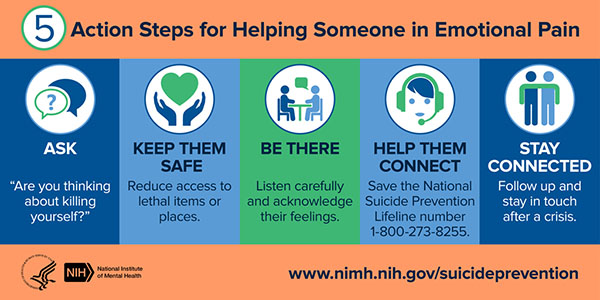
ASK: “Are you thinking about killing yourself?” It’s not an easy question, but studies show that asking at-risk individuals if they are suicidal does not increase suicides or suicidal thoughts.
KEEP THEM SAFE: Reducing a suicidal person’s access to highly lethal items or places is an important part of suicide prevention. While this is not always easy, asking if the at-risk person has a plan and removing or disabling the lethal means can make a difference.
BE THERE: Listen carefully and learn what the individual is thinking and feeling. Research suggests acknowledging and talking about suicide may reduce rather than increase suicidal thoughts.
HELP THEM CONNECT: Save the National Suicide Prevention Lifeline’s 988 and the Crisis Text Line’s number (741741) in your phone, so it’s there when you need it. You can also help make a connection with a trusted individual like a family member, friend, spiritual advisor, or mental health professional.
STAY CONNECTED: Staying in touch after a crisis or after being discharged from care can make a difference. Studies have shown the number of suicide deaths goes down when someone follows up with the at-risk person.
Risk Factors
Suicide does not discriminate. People of all genders, ages, and ethnicities can be at risk. Suicidal behavior is complex, and there is no single cause. The main risk factors for suicide are:
- Depression, other mental disorders, or substance use disorder
- Chronic pain
- A history of suicide attempts
- Family history of a mental disorder or substance use
- Family history of suicide
- Exposure to family violence, including physical or sexual abuse
- Presence of guns or other firearms in the home
- Having recently been released from prison or jail
- Exposure, either directly or indirectly, to others' suicidal behavior, such as that of family members, peers, or celebrities.
Most people who have risk factors will not attempt suicide, and it is difficult to tell who will act on suicidal thoughts. Although risk factors for suicide are important to keep in mind, someone who is showing warning signs of suicide may be at higher risk for danger and need immediate attention.
Stressful life events (such as the loss of a loved one, legal troubles, or financial difficulties) and interpersonal stressors (such as shame, harassment, bullying, discrimination, or relationship troubles) may contribute to suicide risk, especially when they occur along with suicide risk factors.
Family and friends are often the first to recognize the warning signs of suicide, and they can take the first step toward helping a loved one find mental health treatment. See the resources on NIMH’s Find Help for Mental Illnesses page if you're not sure where to start.
Identifying People at Risk for Suicide
Universal Screening: Research has shown that a three-question screening tool helps emergency room personnel identify adults at risk for suicide. Researchers found that screening all patients – regardless of the reason for their emergency room visit – doubled the number of patients identified as being at risk for suicide. The researchers estimated that suicide-risk screening tools could identify more than three million additional adults at risk for suicide each year.
Predicting Suicide Risk Using Electronic Health Records: Researchers from NIMH partnered with the VA and others to develop computer programs that could help predict suicide risk among veterans receiving VA health care. Other healthcare systems are beginning to use data from electronic health records to help identify people with suicide risk as well.
Treatments and Therapies
Effective, evidence-based interventions are available to help people who are at risk for suicide.
Brief Interventions
Safety Planning: Personalized safety planning has been shown to help reduce suicidal thoughts and actions. Patients work with a caregiver to develop a plan that describes ways to limit access to lethal means such as firearms, pills, or poisons. The plan also lists coping strategies and people and resources that can help in a crisis.
Follow-up phone calls: Research has shown that when at-risk patients receive further screening, a Safety Plan intervention, and a series of supportive phone calls, their risk of suicide goes down.
Psychotherapies
Multiple types of psychosocial interventions have been found to help individuals who have attempted suicide (see below). These types of interventions may prevent someone from making another attempt.
Cognitive Behavioral Therapy (CBT) can help people learn new ways of dealing with stressful experiences. CBT helps individuals recognize their thought patterns and consider alternative actions when thoughts of suicide arise.
Dialectical Behavior Therapy (DBT) has been shown to reduce suicidal behavior in adolescents. DBT has also been shown to reduce the rate of suicide in adults with borderline personality disorder, a mental illness characterized by an ongoing pattern of varying moods, self-image, and behavior that often results in impulsive actions and problems in relationships. A therapist trained in DBT can help a person recognize when their feelings or actions are disruptive or unhealthy and teach the person skills that can help them cope more effectively with upsetting situations.
NIMH’s Find Help for Mental Illnesses page can help you locate a mental health provider in your area. Here are tips to help prepare and guide you on how to talk to your health care provider about your mental health and get the most of your visit.
Medication
Some individuals at risk for suicide might benefit from medication. Health care providers and patients can work together to find the best medication or medication combination, as well as the right dose. Because many individuals at risk for suicide often have a mental illness or substance use problems, individuals might benefit from medication along with psychosocial intervention.
Clozapine is an antipsychotic medication used primarily to treat individuals with schizophrenia. To date, it is the only medication with a specific U.S. Food and Drug Administration (FDA) indication for reducing the risk of recurrent suicidal behavior in patients with schizophrenia or schizoaffective disorder.
If you are prescribed a medication, be sure you:
Talk with your health care provider or a pharmacist to make sure you understand the risks and benefits of the medications you're taking.
Do not stop taking a medication without talking to your health care provider first. Suddenly stopping a medication may lead to "rebound" or worsening of symptoms. Other uncomfortable or potentially dangerous withdrawal effects also are possible.
Report any concerns about side effects to your health care provider right away. You may need a change in the dose or a different medication.
Report serious side effects to the FDA MedWatch Adverse Event Reporting program online or by phone at 1-800-332-1088. You or your health care provider may send a report.
For the most up-to-date information on medications, side effects, and warnings, visit the FDA website.
Collaborative Care
Collaborative Care is a team-based approach to mental health care. A behavioral health care manager will work with the person, their primary health care provider, and mental health specialists to develop a treatment plan. Collaborative care has been shown to be an effective way to treat depression and reduce suicidal thoughts.
• Information is from National Institute of Mental Health - https://www.nimh.nih.gov

OUR PARTNERS
The producers will be donating a percentage of their proceeds to them.
JED is a nonprofit that exists to protect emotional health and prevent suicide for our nation’s teens and young adults. We’re partnering with high schools and colleges to strengthen their mental health, substance abuse and suicide prevention programs and systems. We’re equipping teens and young adults with the skills and knowledge to help themselves and each other. We’re encouraging community awareness, understanding and action for young adult mental health. JED is also partners with "Dear Evan Hansen". VISIT THEIR WEBSITE
SEIZE THE AWKWARD focuses on the idea that it may feel a little difficult or awkward to speak to your friend about your concerns about them, but that if you accept the awkward feeling as natural, you can move past the awkwardness and start a helpful/meaningful conversation. Since its launch, the Seize the Awkward campaign has garnered over 7.5 million video views and over 87,000 sessions on their website. With exposure via posters, a series of excellent videos featuring prominent YouTube influencers, and a whole group of exciting new partnerships rolling out throughout September for Suicide Prevention Month, the campaign is finding new ways to bring people closer to talking to their friends about mental health. VISIT THEIR WEBSITE
Our Suicide Prevention Center is the nation’s first and an international leader in training, research and crisis services. VISIT THEIR WEBSITE
TEEN LINE is an anonymous, nonjudgmental space for youth. Through our hotline, teens can access personal peer-to-peer support from highly trained teens supervised by adult mental health professionals. Our work extends to providing outreach and support to schools and other youth organizations. VISIT THEIR WEBSITE
AMAZING RESOURCES
THE NATIONAL SUICIDE PREVENTION LIFELINE is a national network of local crisis centers that provides free and confidential emotional support to people in suicidal crisis or emotional distress 24 hours a day, 7 days a week. We're committed to improving crisis services and advancing suicide prevention by empowering individuals, advancing professional best practices, and building awareness.We can all help prevent suicide. The Lifeline provides 24/7, free and confidential support for people in distress, prevention and crisis resources for you or your loved ones, and best practices for professionals. The National Suicide Prevention Lifeline 988 connects the caller to a certified crisis center near where the call is placed. VISIT THEIR WEBSITE
CRISIS TEXT LINE is free, 24/7 support for those in crisis. Text 741741 from anywhere in the US to text with a trained Crisis Counselor. Crisis Text Line trains volunteers to support people in crisis. With over 100 million messages processed to date, we’re growing quickly, but so is the need. Crisis Text Line was born “from the rib” of DoSomething.org, the largest organization for young people and social change. Dozens of DoSomething.org members were texting in to ask for personal help and CEO Nancy Lublin came up with the idea for Crisis Text Line and quietly launched in August 2013. Within 4 months, Crisis Text Line was being used in all 295 area codes in the US. Two years later, Crisis Text Line spun out into a separate entity and Nancy went along with it. Complete story detailed in this New Yorker article. VISIT THEIR WEBSITE
BYSTANDER REVOLUTION is a website offering practical, crowdsourced advice about simple things individuals can do to defuse bullying and help shift the culture. No matter who you are or what you’re facing, you can find personal stories, suggestions, and encouragement from someone who has dealt with a similar issue. Search by problem or solution to find tips from people who have been targets, people who have been bystanders, and even people who have bullied. Try one of the ideas. Share one with a friend. You can be of real help right away. And if these ideas spread and become habits, it could change the dynamics forever. VISIT THEIR WEBSITE
OUTREACH VIDEOS
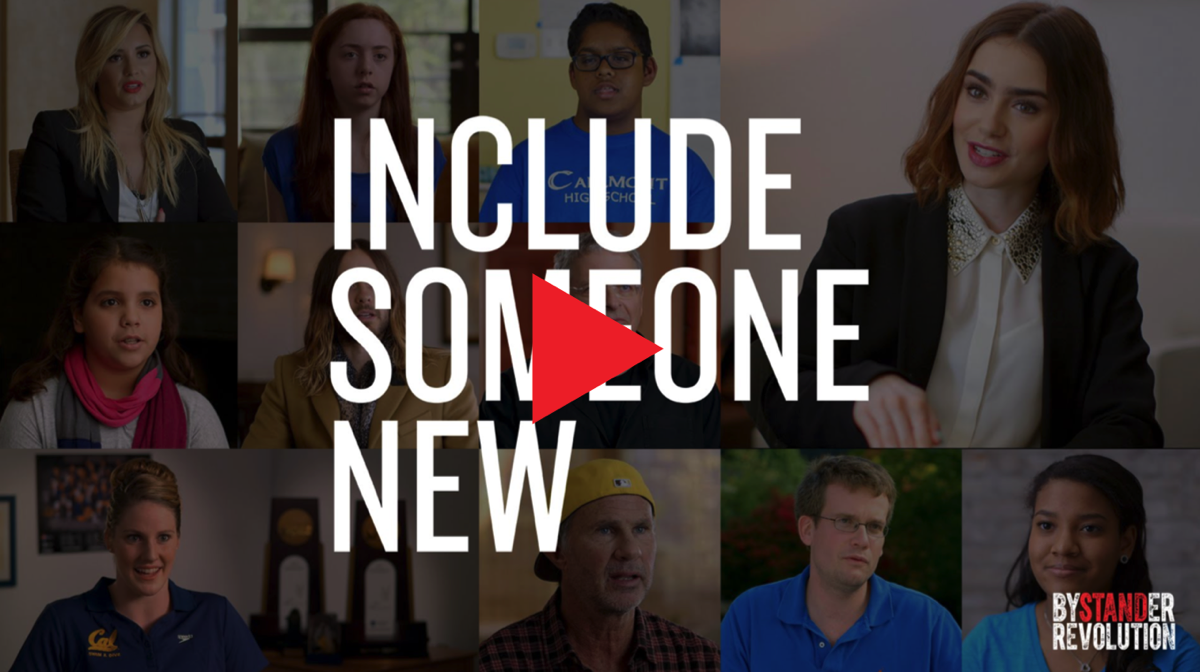
INCLUDE SOMEONE NEW
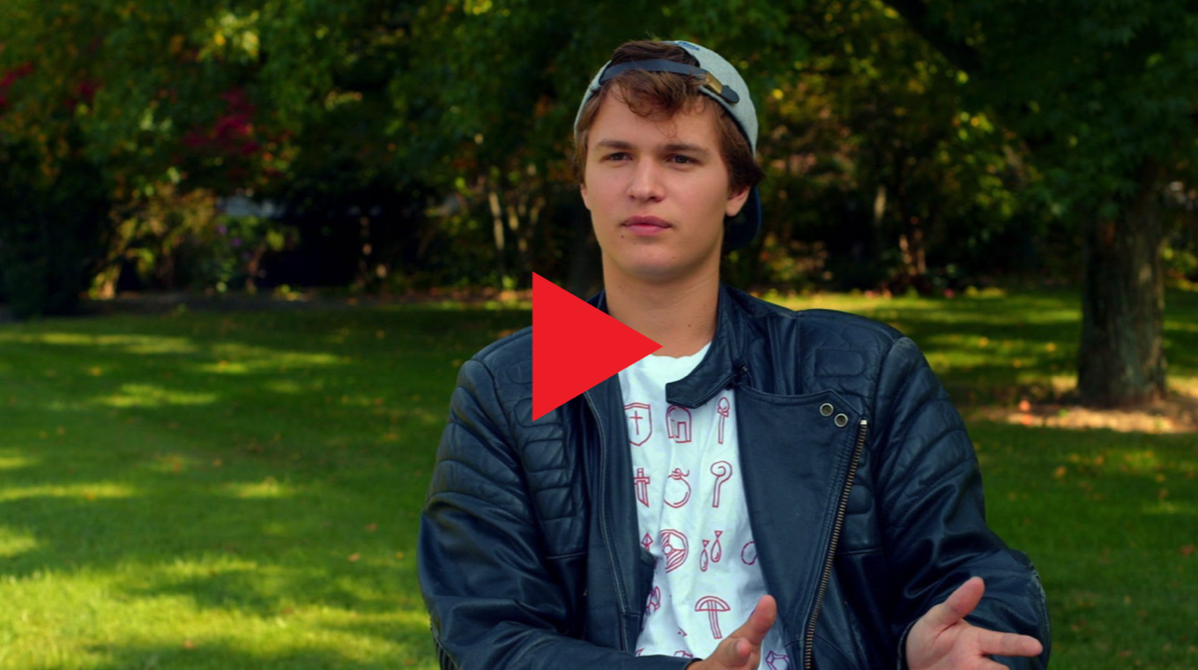
ANSEL ELGORT
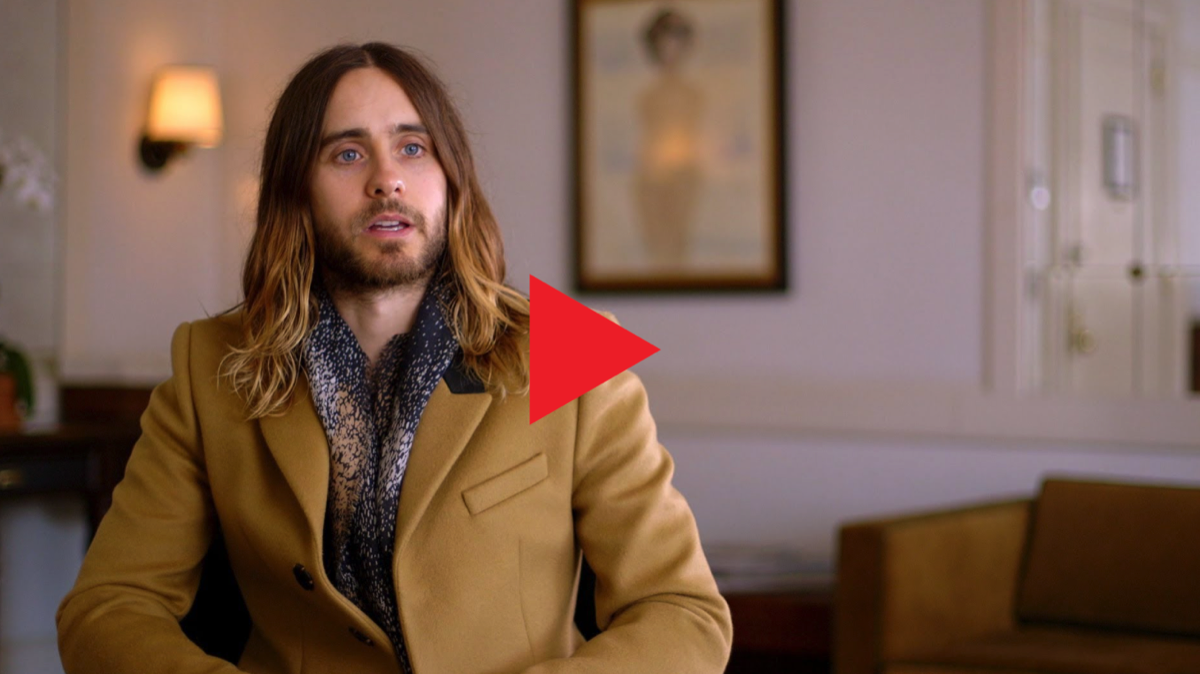
JARED LETO
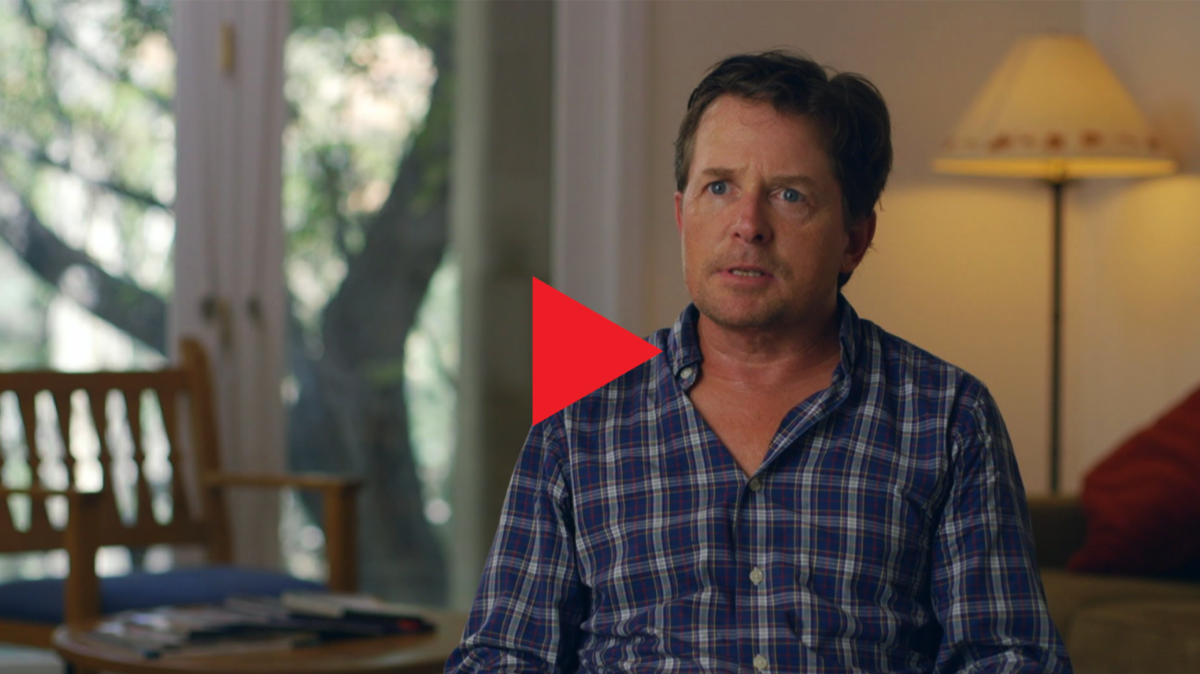
MICHAEL J. FOX

DANICA PATRICK
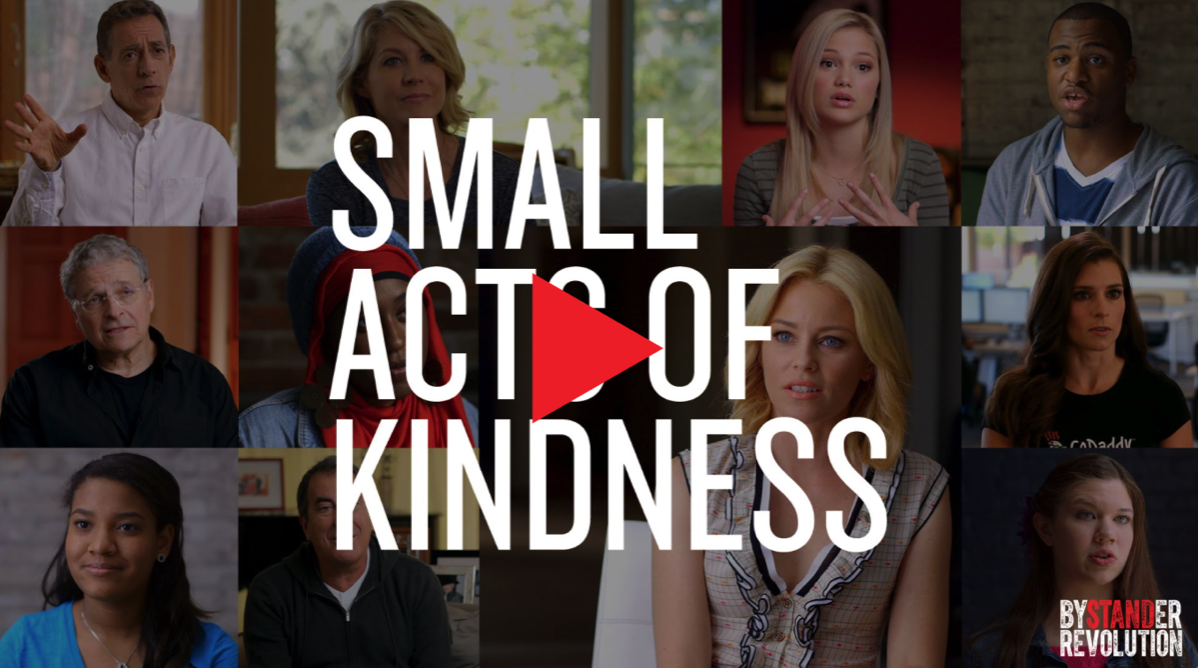
SMALL ACTS OF KINDNESS
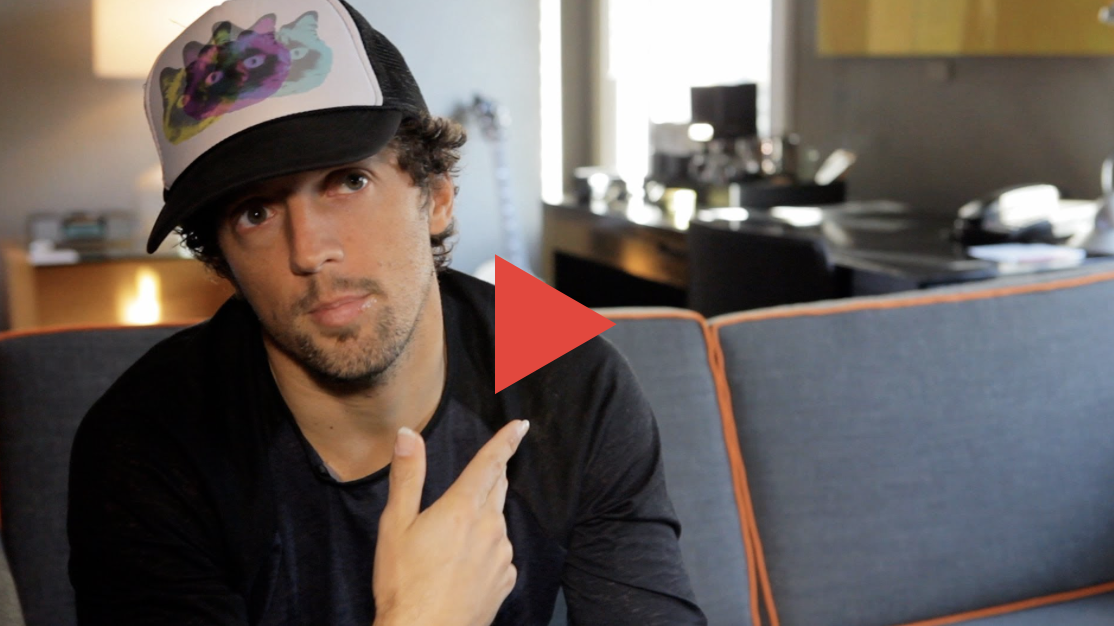
JASON MRAZ
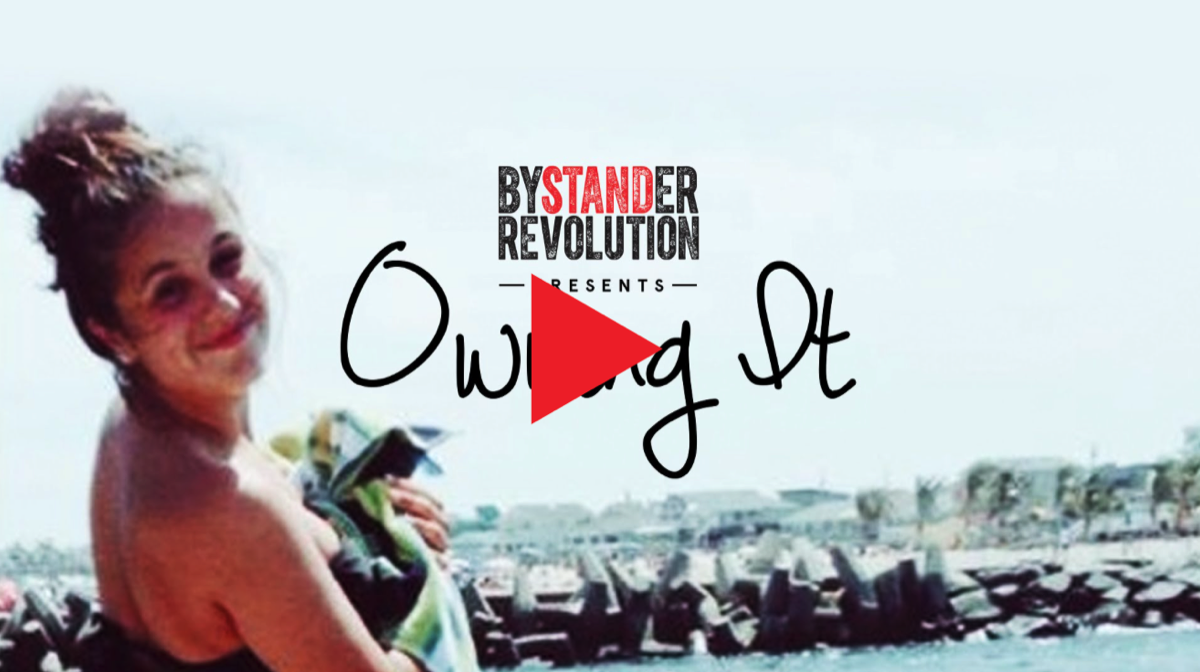
OWNING IT
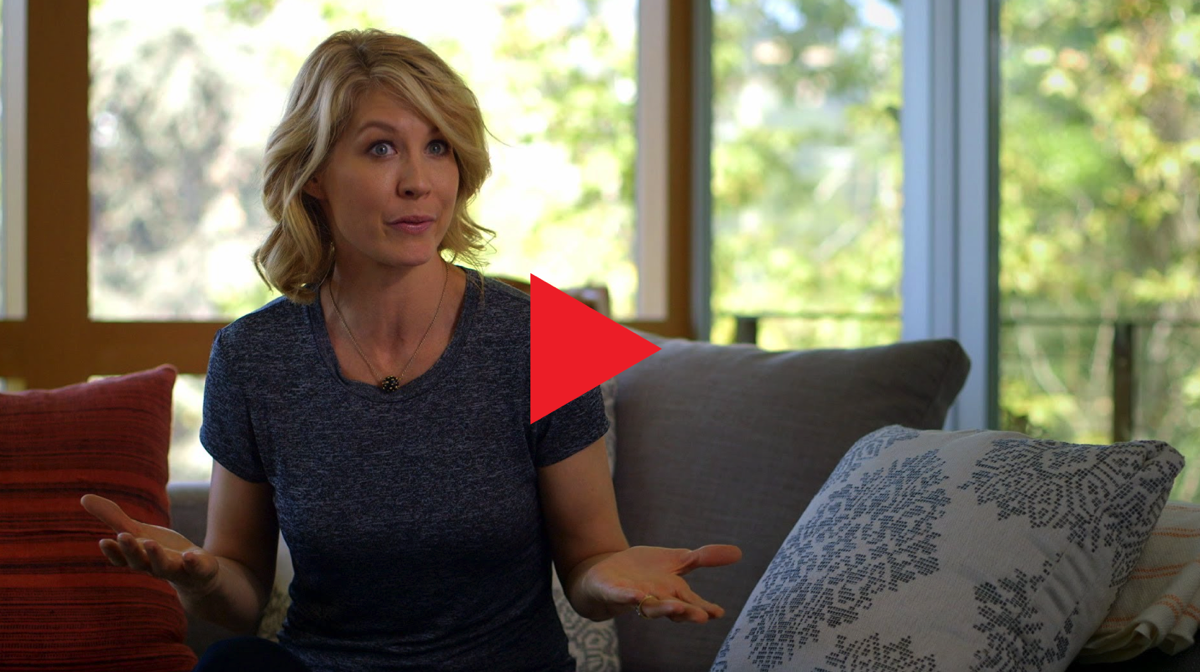
JENNA ELFMAN
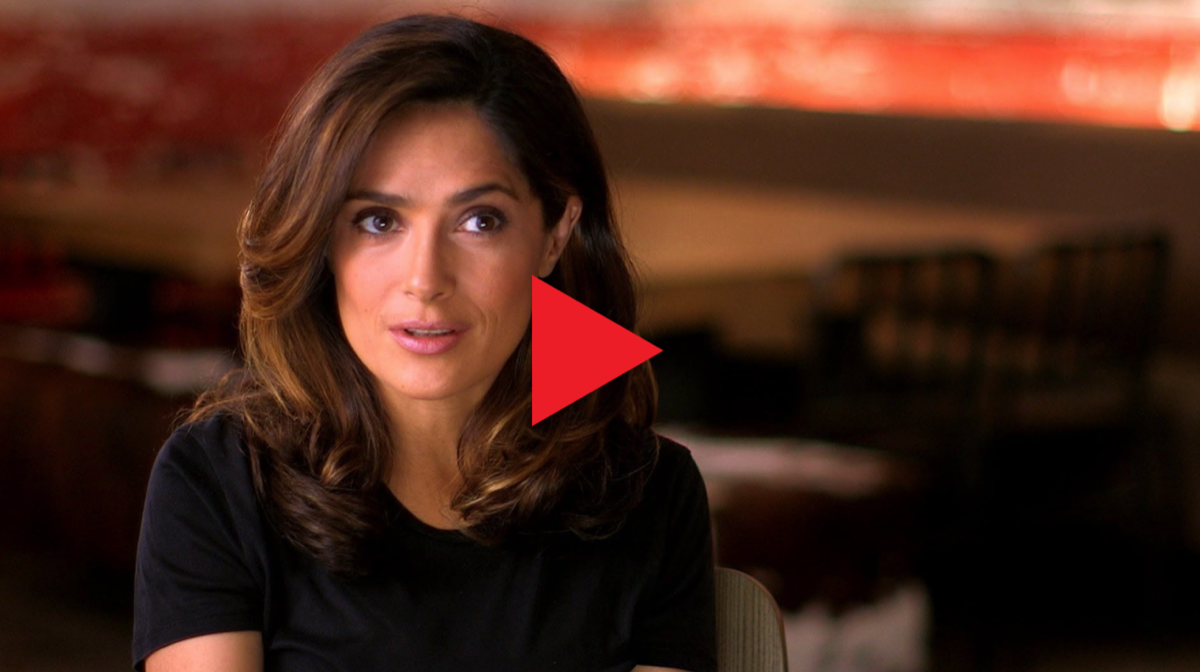
SALMA HAYEK
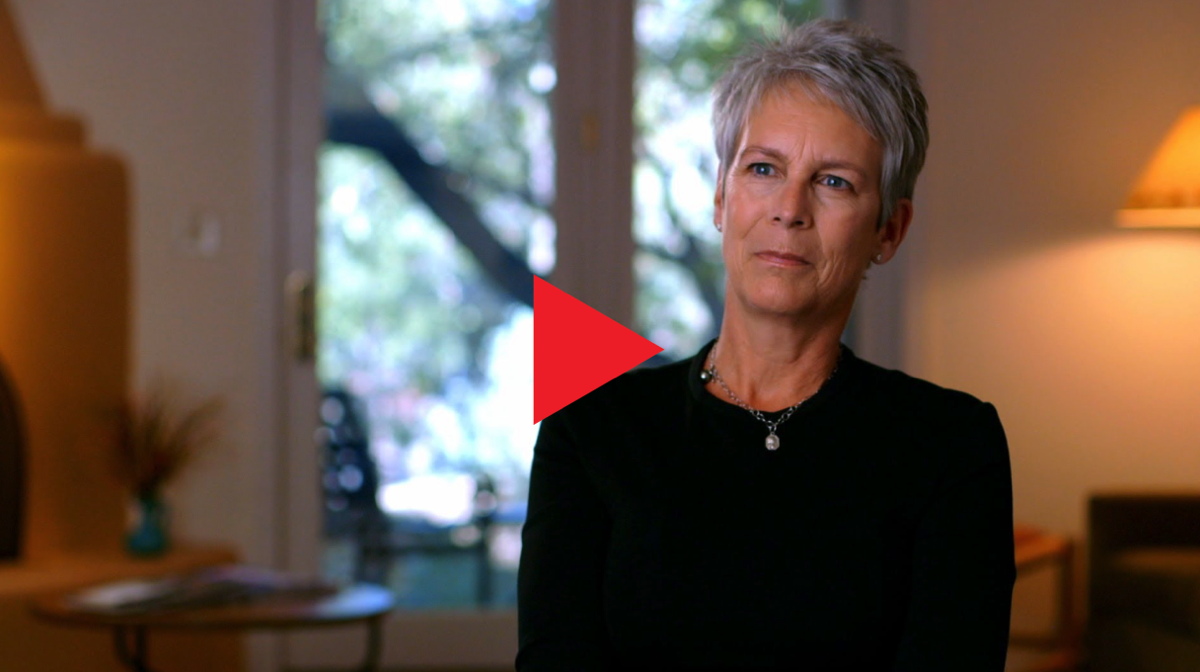
JAMIE LEE CURTIS
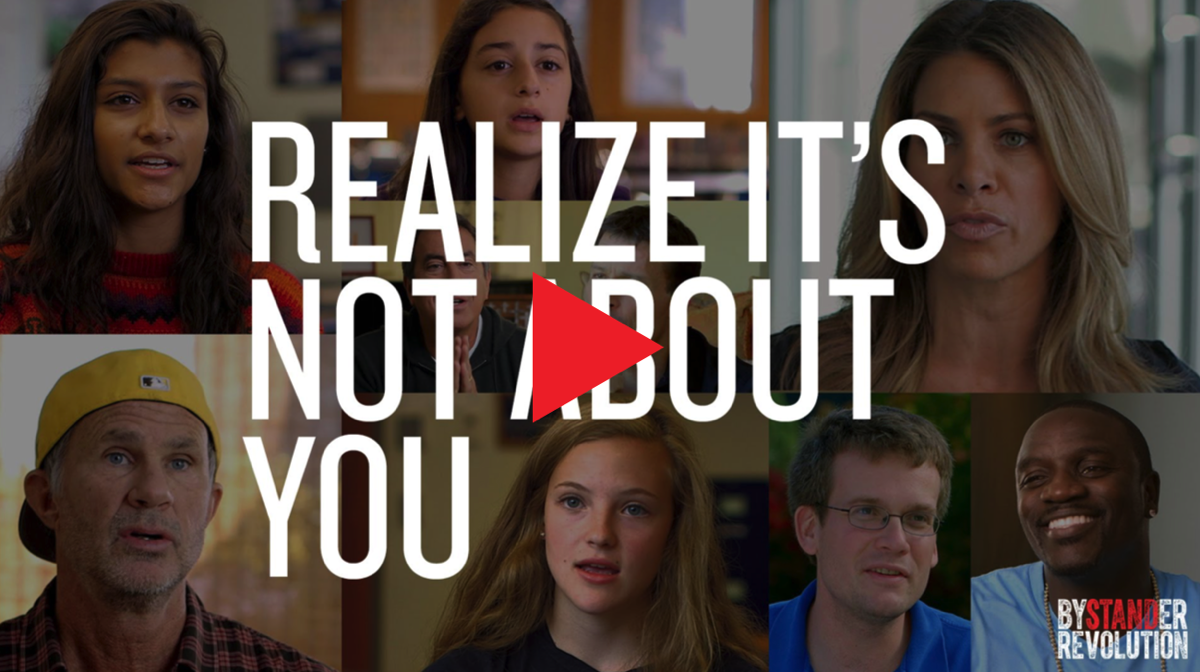
REALIZE IT'S NOT ABOUT YOU
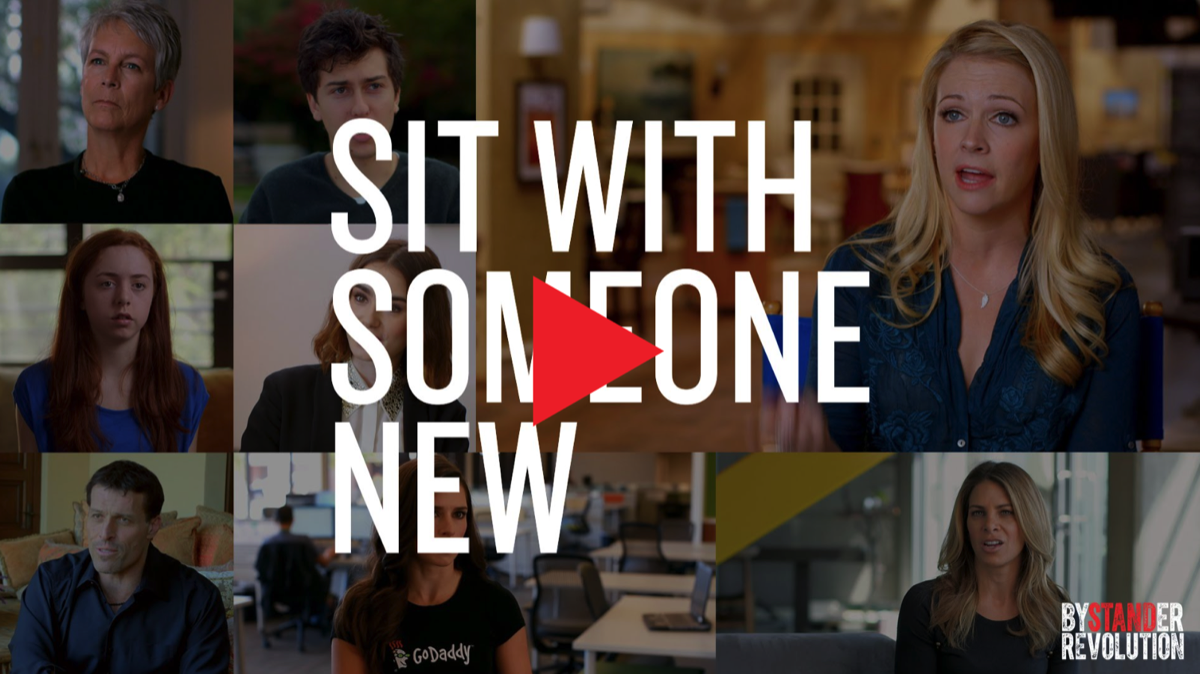
SIT WITH SOMEONE NEW

TONY ROBBINS

NINA DOBREV
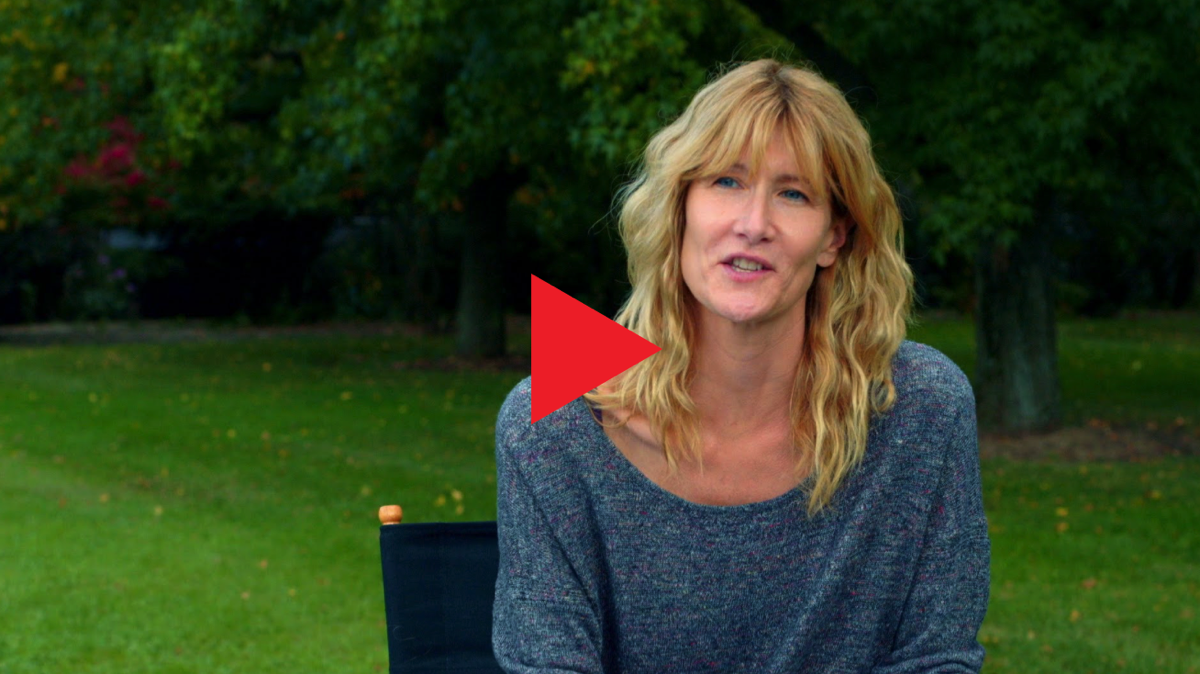
LAURA DERN
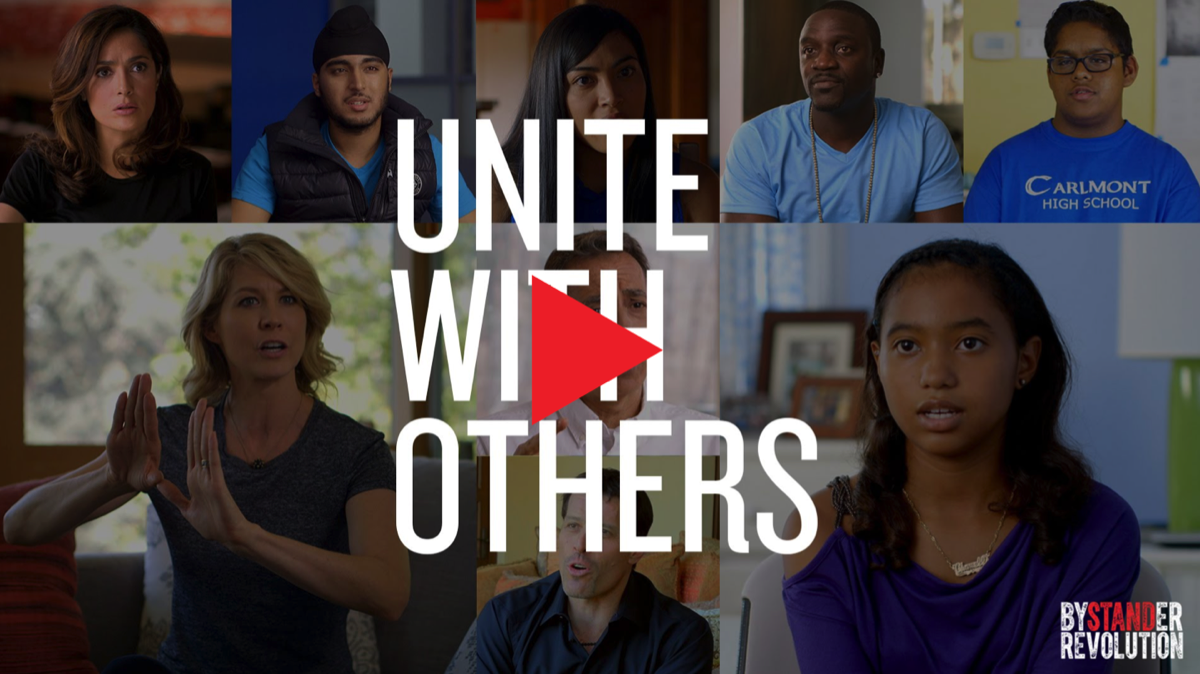
UNITE WITH OTHERS
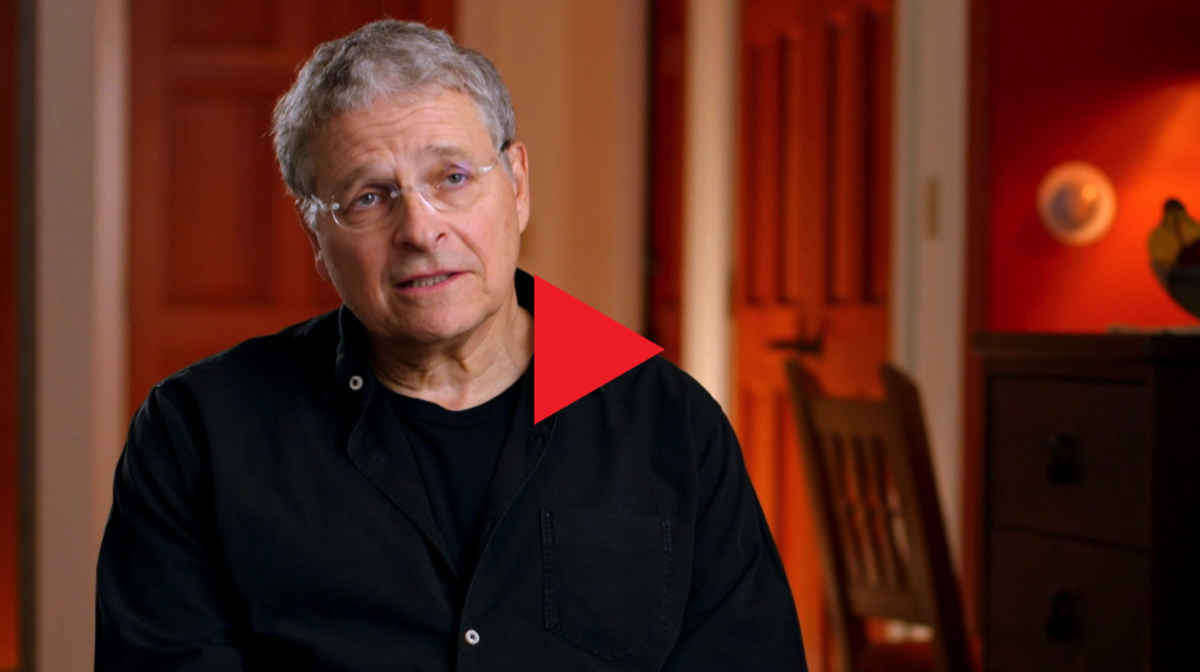
LAWRENCE KASDAN
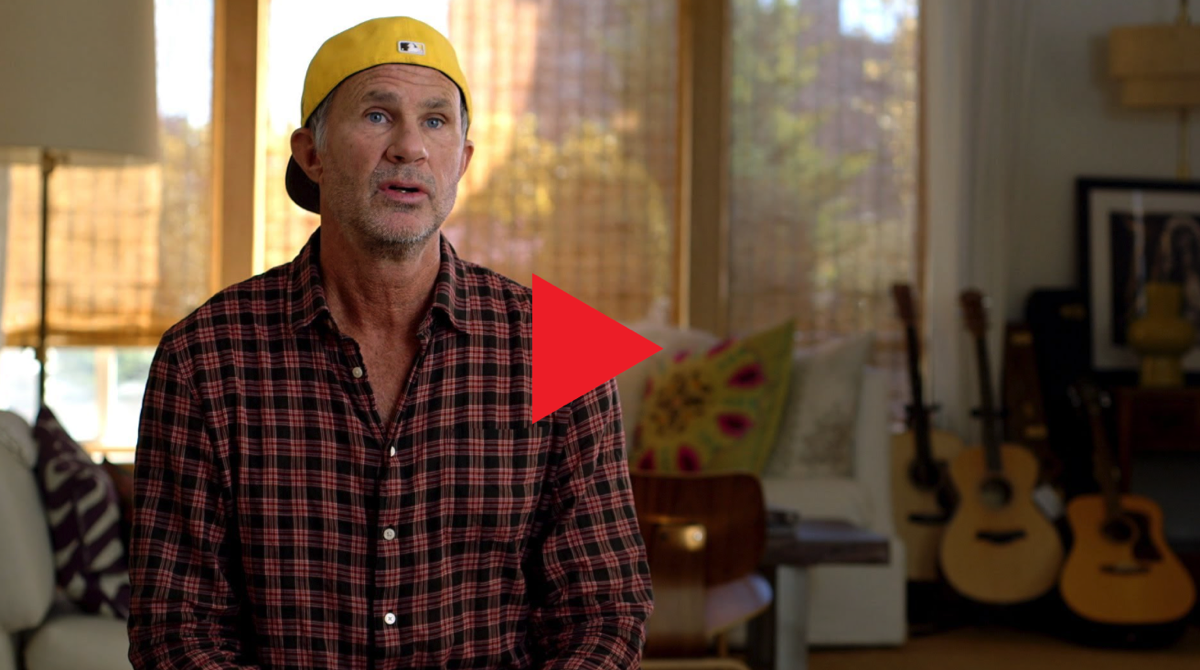
CHAD SMITH
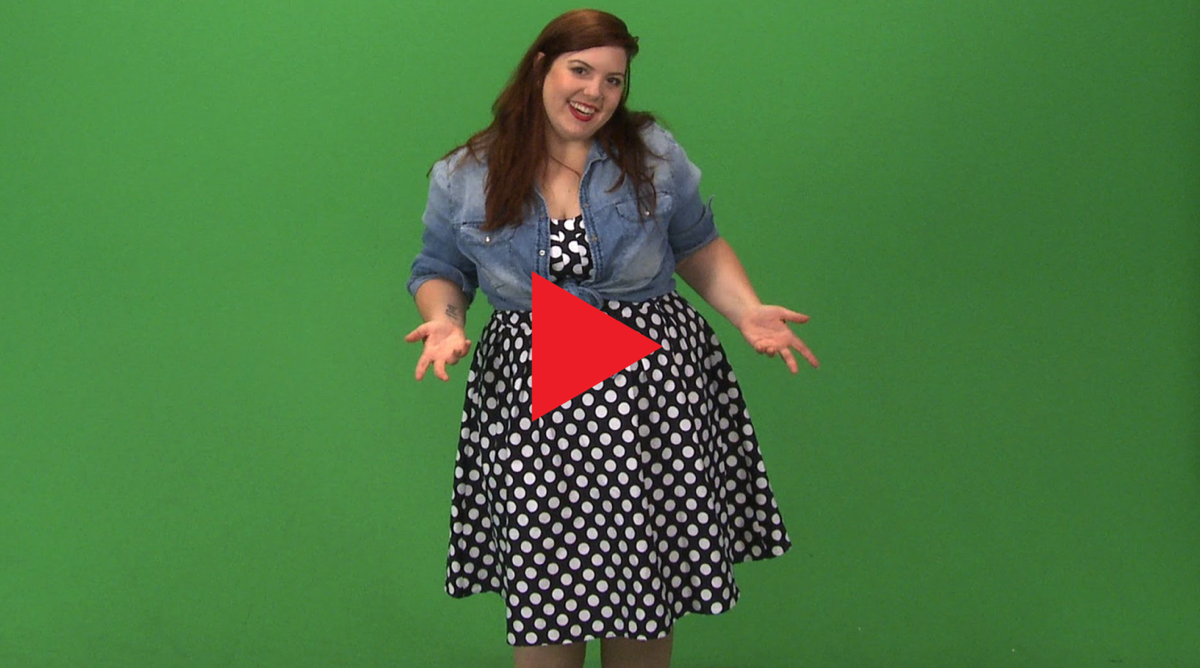
MARY LAMERT
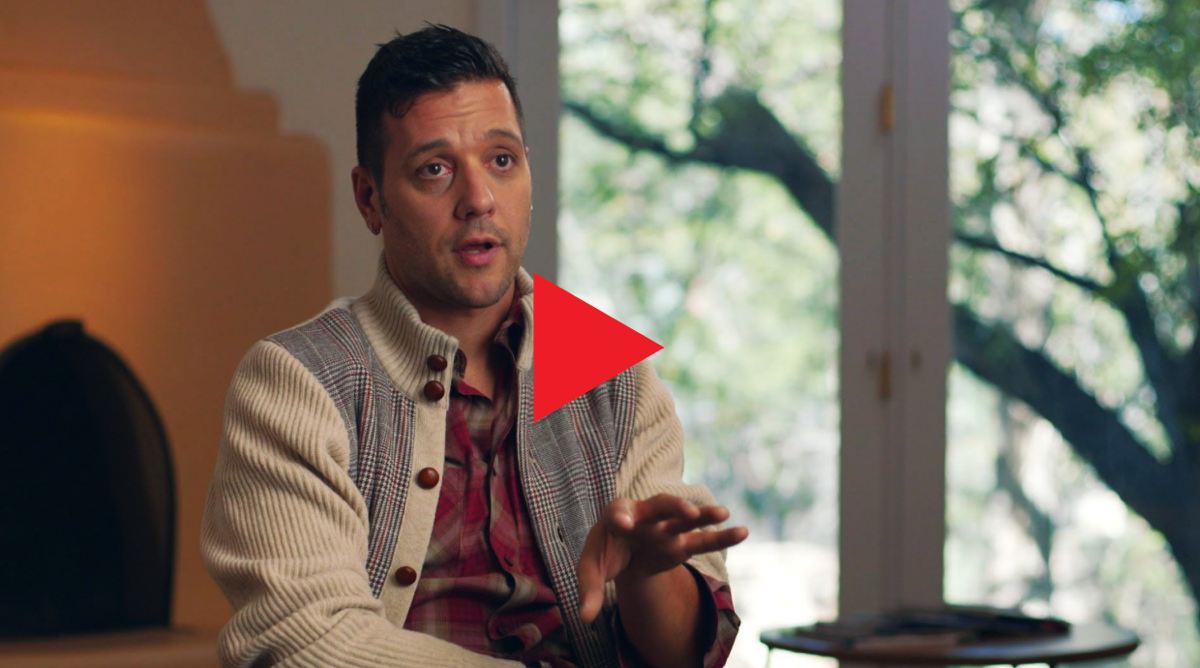
GEORGE STROUMBOULOP


